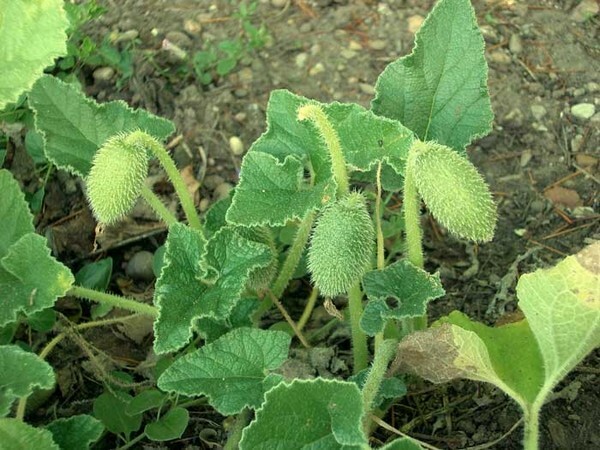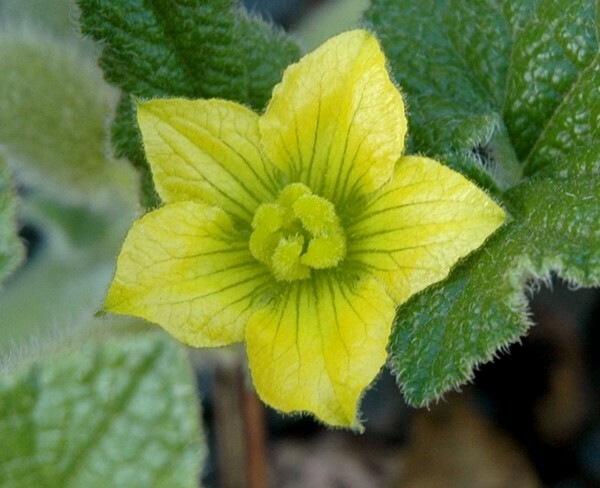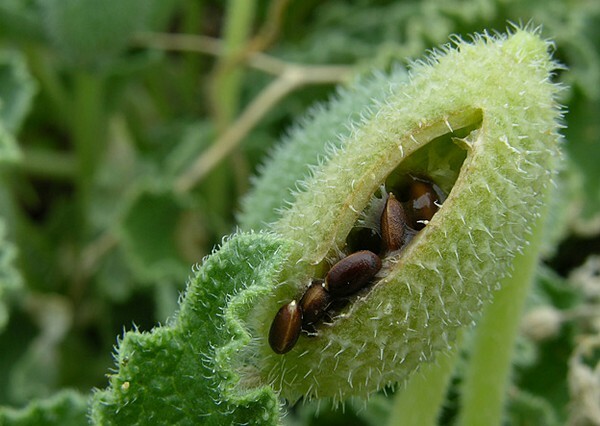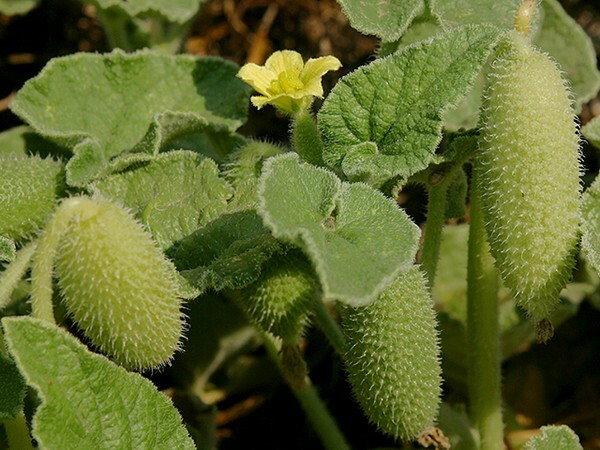- Botanical Description
- Chemical Composition
- Therapeutic Properties
- Procurement of raw materials
- Methods of application
- Precautions
Rabid cucumber is a perennial or annual Mediterranean plant belonging to the Pumpkin family. Its distinctive feature, which is of interest to many, is the ability, when ripening fruit under pressure, to eject them over fairly long distances. In nature, the plant is found in Asia Minor and Central Asia, in the European zone of Russia, in the Crimea, in the Caucasus, in the countries of the Mediterranean, along the Black Sea coast, in the Azores. Raging cucumber is used in folk medicine, as it has medicinal properties. Some people grow it for decorative purposes to decorate arches, arbours, fences in suburban areas.

Botanical Description
Raging cucumber is a rather unpretentious plant. It can grow on pebbled shores of the seas, dry clayey slopes, in wastelands, along roadsides, in deserts and steppes, in sand, in the area of garbage dumps. Reproduction is carried out with the help of seeds, a technique whose germination is analogous to the germination of the seeds of zucchini or pumpkin. Before planting, they are soaked, and then planted in greenhouses, greenhouses or in flower pots in the apartment.
Root type rod system. The root is fleshy, slightly branched, thickened, inside the whitish color.
Stems are thick, curly, creeping along the soil or ascending. Outside, slightly roughened, covered with hard hairs, do not have antennae. The length of the stem can reach one meter or more.
The leaf is regular, the leaves are on long( 5 - 15 cm) fleshy petioles. The shape of the leaf blade is cordate-ovate or slightly lobate. Its length is 5 - 10 cm, and width - 4 - 8 cm. Edges are notched. Above, the leaves are painted green, below - greyish-felt, rough, wrinkled, densely covered with short hairs.
Blooming cucumber begins in July and lasts until September. The plant is monoecious, the flowers are dioecious. Flowers of large size come out of the axils of the leaves, painted yellowish green. Corolla campanulate, five-lobed, petals soldered. Female flowers are solitary, located on long pedicels, the male flowers are collected in axillary hands on long peduncles in the sinuses of the upper leaves.

Fruit ripening occurs in August-October. The fetus is a gray-green oblong tampon 4-6 cm in length, covered with prickly bristles on the outside, and juicy inside. Its length is 4 - 8 cm. In appearance, it reminds a little of the usual small thick cucumber.
At the time of fruit ripening, even the slightest touch or blow of wind causes a sharp separation of the pumpkin from the stem and the ejection of seeds with mucus through the formed hole under pressure. Seeds have a dark brown color, a smooth surface, elongated in shape, compressed, about 4 mm long.

Interesting: The pressure inside a ripe fruit is about 3 to 6 atmospheres, so seeds can fly out of it at a speed of 10 m / s for distances of up to 10 - 12 meters.
Chemical Composition
Fruits and herbs of plants are mad cucumber contain biologically active substances. However, finally its composition has not yet been studied. In the above-ground part of the plant were found:
- elastin( α- and ㄴ-elaterin, elateritsiny A and B);
- alkaloids;
- steroids;
- triterpenoids( kurbitatsiny);
- proteins;
- carotenoids;
- organic and higher fatty acids;
- allantoin;
- vitamins C and B1.
Therapeutic properties of
Means prepared from the aerial part of a rabid cucumber have a pronounced laxative, anthelmintic, antibacterial, antitumor and diuretic effect. They are actively used in folk medicine for the treatment of the following diseases:
- dropsy, swelling;
- inflammatory liver disease;
- gout;
- hepatitis;
- helminthiosis;
- Neuralgia, rheumatism, sciatica;
- intestinal colic;
- inflammation of the urinary system;
- malignant neoplasms of the uterus;
- disorders of the menstrual cycle;
- intermittent fever.
Outwardly, the means from the plant are used to treat the skin with fungal infection, trophic ulcers, abscesses. They also help with hemorrhoids, inflammation of the nasal mucosa, sinusitis.
Procurement of raw materials
As a medicinal raw material, grass( stems and leaves), unripe fruits and roots of a mad cucumber are used.
For the preparation of the above-ground part, the stems are cut, divided into pieces, washed and dried in the shade in dry sunny weather. The readiness of raw materials is determined as follows: the stems should not bend when bent, but easily break.

. The roots are harvested in autumn. First they dig, shake off the ground, wash with cold tap water, wither outdoors in the sun or indoors with good natural ventilation, and then dry in a dryer.
Fruits are usually used fresh in order to obtain juice or infusions. Dry the fruit in a two-part cut, as well as the roots, pre-wilting them in the sun.
Finished medicinal raw material obtained from furious cucumber can be stored in a closed glass container and used for 1 year.
Ways of using
In folk medicine from various parts of the plant prepare infusions, decoctions, powder, juice.
Broth for the treatment of skin diseases
In an enameled pot, pour 1 tbsp.l.dried grass, add 1 liter of boiling water, put in a water bath and stand for 20 minutes. Then, in the hot state, filter and bring the volume of solution to the initial level with boiled water.
For prolonged non-healing trophic ulcers, prepare a cake from 1 tbsp.l.received broth and 1 tsp.flour, apply it to the ulcer and fix it with a bandage. When the skin is affected by a fungal infection, broth is done by wiping the inflamed areas.
Means for the treatment of sinusitis
Freshly picked unripe fruits of furious cucumber squeeze a small amount of juice. Take 2 drops of juice and add to them 8 drops of cool boiled water. The received composition is instilled in the nose once a day in an amount of 3 to 4 drops in each nasal passage. The next instillation can be carried out only after three days. If there is no effect after the second instillation, the treatment is stopped.
Warning: When fresh juice is obtained from the fruit, gloves should always be worn, as it has a strong irritant effect on the skin, can cause burns, ulcers and blisters.
Remedy for hemorrhoids treatment
On a slow fire for a quarter of an hour, a mixture of 100 ml of vegetable oil and 6 - 7 g of crushed fresh or dried immature fruit is kept. After the time has elapsed, the mixture is allowed to cool and filtered. Obtained oil is lubricated by inflamed hemorrhoids.
Infusion of swelling and worms
Crushed dry grass of furious cucumber in an amount of 1 tsp.pour 200 g of boiling water. The container in which the infusion is placed is wrapped and insisted for 45 minutes, then filtered. Take 20 minutes before eating 5 ml three times a day with edema of various genesis, worms and as a laxative.
Tincture for neuralgia, sciatica and rheumatism
In a container of dark glass mix fresh or dried fruits of furious cucumber and 70% alcohol or brew in a ratio of 1 to 20. The capacity is left for two weeks, after which it is filtered. Tincture is used externally for rubbing the sick places with rheumatism, sciatica and neuralgia.
Precautions
When treating rabid cucumber, special care must be taken and carefully monitored for well-being, since the plant is very poisonous. The consultation of the attending physician is necessary beforehand.
Treatment with this plant is contraindicated for people suffering from pancreatitis, stomach and heart diseases, which are prone to loose stools, as well as pregnant and lactating women.
Chemical compounds that are part of the fruits and seeds of furious cucumber, can cause acute intoxication of the body and death. Using them inside is strictly prohibited. It is established that only 0.5 g of fresh fruit juice, taken orally, can end for a person with fatal poisoning.
In case of an overdose, symptoms such as nausea, vomiting, stitching in the abdomen, a rapid pulse increase.
Growing mad cucumber and decorative use:
